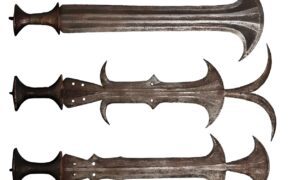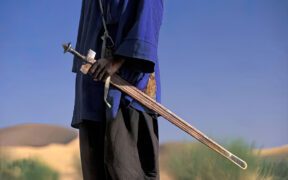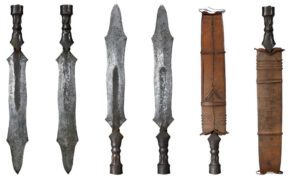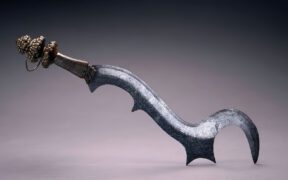Our content features commercial links to our products, committed to transparent, unbiased, and informed editorial recommendations. Learn More
The African Mambele Sword and Its Fearsome Sickle Blade
NO AI USED This Article has been written and edited by our team with no help of the AI
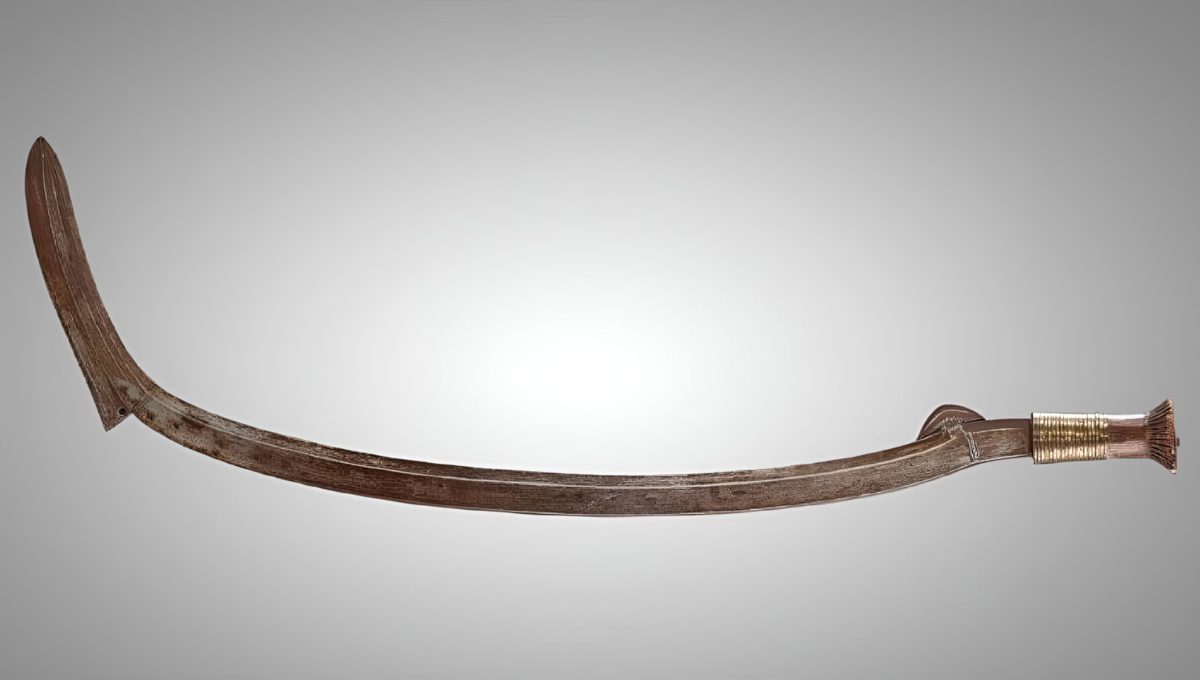
African swords often inspire movies because they look unique and scary. One famous example is the Mambele or Mambeli sword. You might have seen it in films. It was used for stabbing and as a throwing dagger.
The Mambele’s design is like a farming sickle or a special knife from Central Africa. It was made for throwing. This article will look at different kinds of Mambele swords. We’ll talk about their features and how they were used.
KEY TAKEAWAYS
- The Mambele is a distinct, curved, sickle-shaped sword originating from Central Africa.
- Primarily used in close combat and significant cultural ceremonies, the Mambele is a symbol of status and tradition.
- With roots in Central African cultures, the Mambele’s design was likely influenced by early African and Egyptian weapons.
Types of Mambele Swords
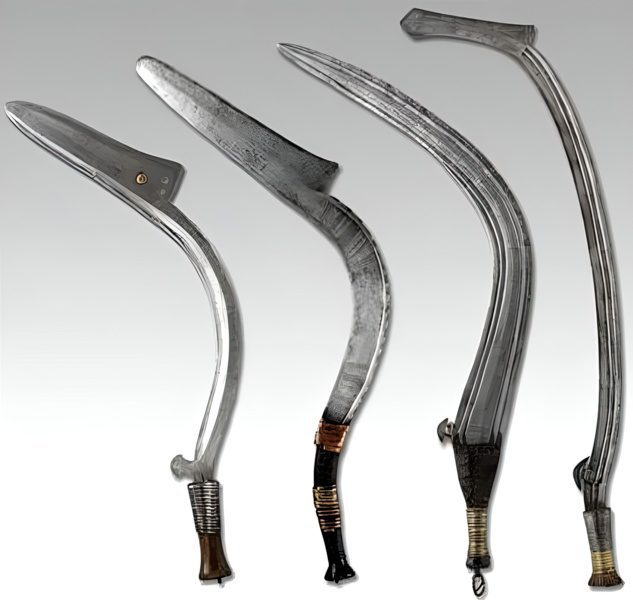
EXPERT INISGHTThe types of Mambele are usually differentiated in their length and curvature of the blade. Sometimes they can be radically curved with a massive blade tip, while some resemble a Khopesh form but still have the broadened blade tip at the end. Some Mambele don’t feature the blade tip but have the same curve, guard, handle, and pommel design.
Characteristic of the Mambele Sword
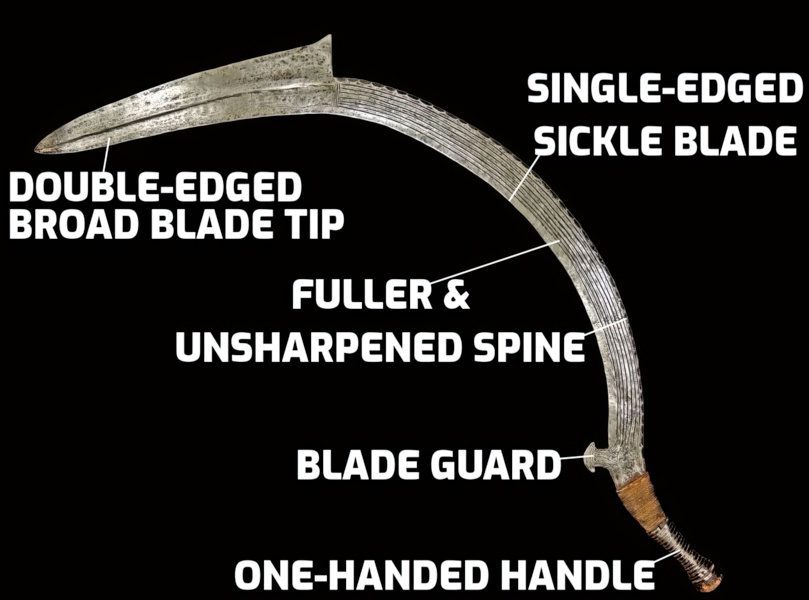
The Mambele sword is a sickle-like weapon and a fairly large instrument compared to smaller African throwing daggers. It stands out due to its design and the widening at the end of the blade.
This sword is not very big, and its characteristics make it a melee weapon, not a throwing one, as it’s commonly believed.
Blade

The main thing about a Mambele sword is its blade. It has a crescent moon shape, opposite of the Egyptian Khopesh. It’s usually iron, but steel makes it stronger. A typical Mambele is 26 to 30 inches (66 to 76 cm) long.
The Mambele’s blade is sharp on the inside of the curve, but both edges are sharp at the end. This part is bigger and good for piercing. It’s the most dangerous part, used for cutting deep or pulling down enemy shields.
Near the handle, there’s a part of the blade that’s not sharp. This is for grabbing and using both hands to pull down shields. The blade can be flat or have a groove, making it lighter and stronger.
Guard
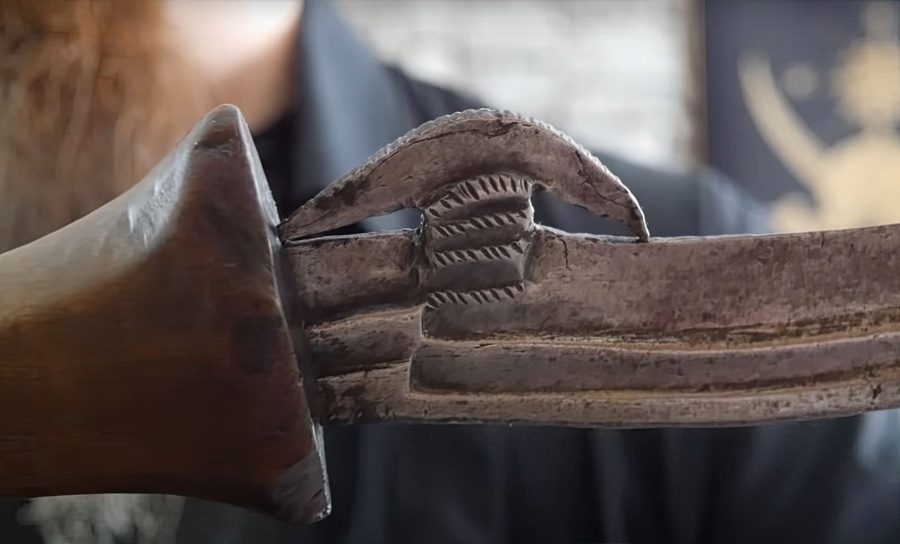
Mambele swords typically don’t have a guard, likely because they evolved from throwing daggers. This design offers no hand protection.
Like many African swords, they were used with a large shield, allowing for more flexible moves.
However, there is a part that looks a bit like a guard. It’s a metal piece, about an inch (2.5 cm) long, sticking out from where the blade starts to curve.
Shaped like an ear, this piece could help with protection or be used to attach a rope or leather strip from the handle end to this point.
Handle
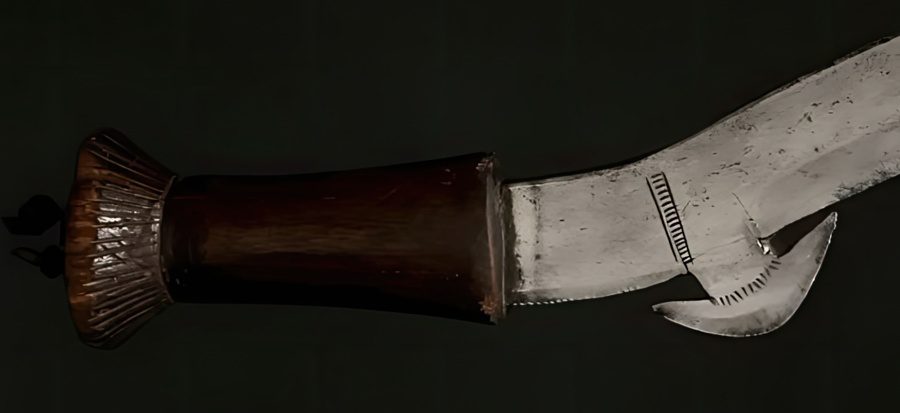
The handle of the Mambele sword is one-handed, meaning it is an exact fit for one hand. It is usually made in the traditional African handle shape, an hourglass design with a broader top and bottom. This allows for a firm grip when performing unorthodox and versatile attacks.
The handle is often bare and made of wood, but there are cases where it can be wrapped with animal skin, metal wire, plant fibers, or light aluminum.
It is an open-style guard that offers no protection to the wielder’s hands. The standard handle length for the Mambele sword is 4 to 6 inches (10 to 15 cm).
Pommel
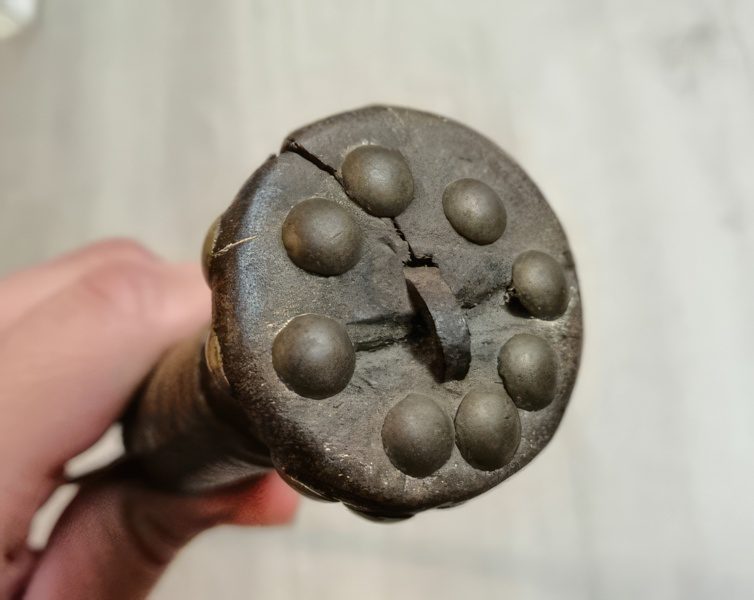
Some Mambele swords have a pommel, a metal piece that balances the blade. Others have bigger handle ends that work like pommels.
These pommels are often brass and can be decorative, showing the user’s social status. The fancier the sword, the higher the person’s rank. Sometimes, the blade extends through the handle, twisting to form a makeshift pommel.
A common feature in Mambele pommels is a hole for a rope or cord. This connects to the ‘ear’ on the blade, making the sword easier to carry and hold.
Size, Length and Weight
Even with its special design, the Mambele is a small sword, usually 25 to 37 inches (65 to 95 cm) long. This size is perfect for using with one hand. It has a strong curve that can handle many strikes without breaking.
The Mambele is made for different kinds of attacks, even throwing like a boomerang. So, it’s light, weighing about 1.65 lbs (0.75 kg). This makes it easy to carry on your waist or shoulder.
Uses of the Mambele Sword
The Mambele sickle sword is primarily a melee weapon because of its design, length, and shape. It is used with one hand and often combined with a large shield. The most important factor when using this sword is footwork, swiftly hopping around the target while reflecting unexpected strikes.
Warfare & Hunting
Mambele swords were used as a warfare tool, more as a piercing weapon rather than a slashing one. The sickle sword on the Mambele was fairly common in African regions because while it wasn’t overly effective against armor, it excelled when battling large shields used during the time. This design of the Mambele is to hit the target behind the shield, delivering deep puncture wounds and internal damage.
Some cases of African warfare leave the battlefield open, making it easy for the enemy to escape. In this case, the Mambele would have been used by tribes as an act of intimidation.
Another use for the Mambele was hunting, along with a smaller sickle-shaped throwing knife. If a hunted animal were to encounter the Mambele sickle sword, the blade tip would easily tear through its body, leading to a painful death.
Dueling
The Mambele could be used as a dueling or fencing sword commonly seen today in African traditional martial art dances. Although there is little historical evidence, these shapes of swords that compromised their fighting capability could be used in formalized combat with a code where death is not the end goal. This theory might be disputed, but in many African cultures throughout the continent, there were numerous duels with swords.
Prestigious & Weapon of Rank
The Mambele sword is tightly rooted in Central African culture and is a highly valued piece of metal in many regions. Europeans who traveled to the region claimed the sword was ceremonial and tied with prestige and rank rather than for warfare. It was also used in cultural celebrations, weddings, and religious gatherings.
Many foreign countries were on the hunt for these swords because of their high status, and they can be seen today in museums in Belgium and England.
Trade Currency
In some African countries today, the Mambele is seen as a form of currency rather than a weapon of war. Metal and iron were once very rare in Africa and used as valuable currency, and this belief is still practiced today. Highly decorated African iron swords like the Mambele sword were among the most popular with traders and merchants.
History and Origins of the Mambele Sword
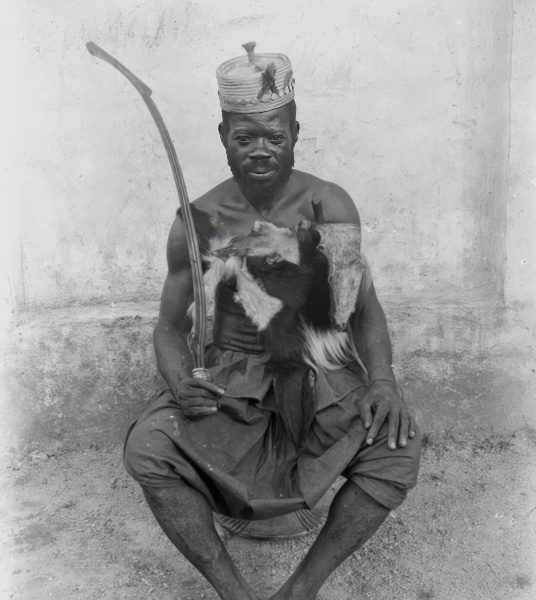
The Mambele is an African sword used mainly in the Central African regions of modern-day Sudan, northern parts of the Democratic Republic of Congo, the Central African Republic, and Gabon. It was a popular sword used primarily by the Bandia, Mongelima, Zande, Zaire, Boa, and Mangbetu people.
The theory and origins are disputed, as with many other African iron weapons. Like the Ethiopian Shotel, some folks trace the form of the Mambele to be directly inspired by the Egyptian Khopesh and possibly date back into antiquity.
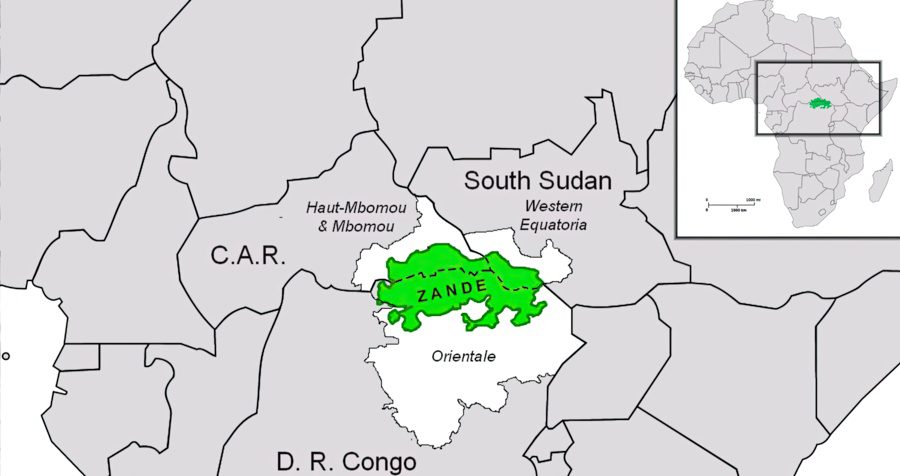
The prototype of Mambele was a throwable dagger which may have been called Hunga Munga, which existed in Northern and Southern Africa. It was of very high value in hunting, warfare, and nobility and influenced the larger sickle Mambele as we know it today in Central Africa. However, the Mambele sickle sword is not the same weapon as the Hunga Munga and is not to be confused with other names such as Kpinga, Danisco, and Njiga.
The main difference between the Mambele sickle sword and the Hunga Munga is how they are used. The Mambele is slashed like a hatchet, while the Hunga Munga is thrown horizontally from a distance.

